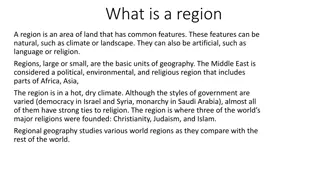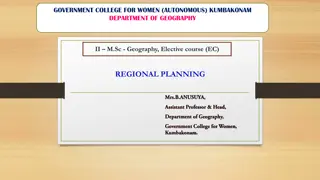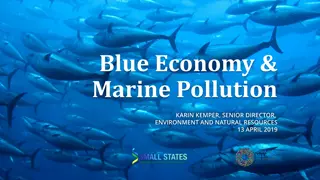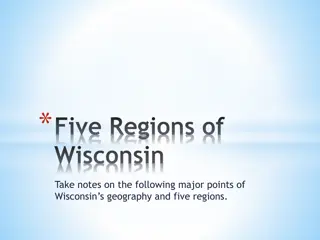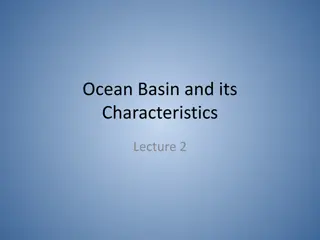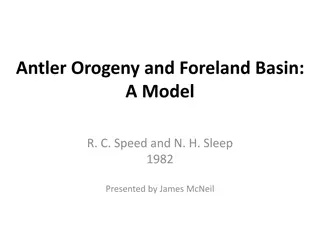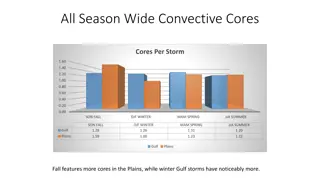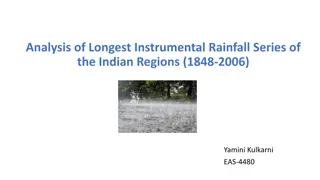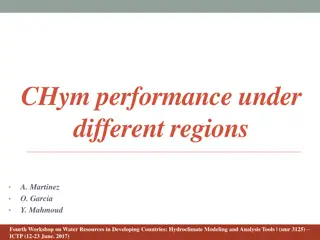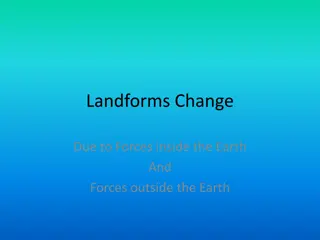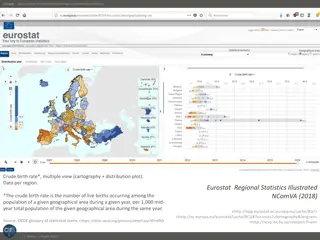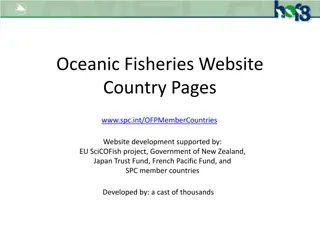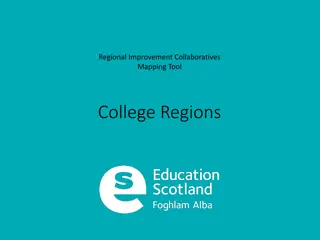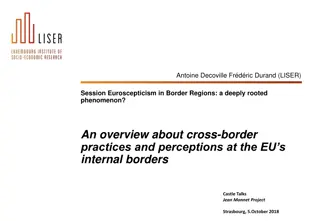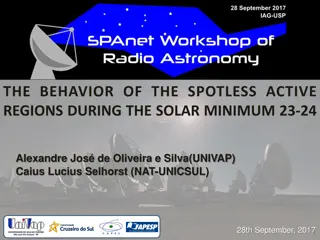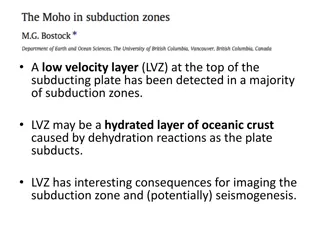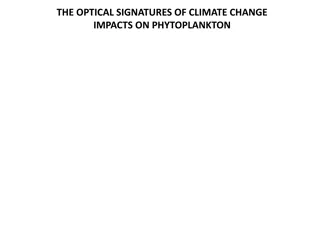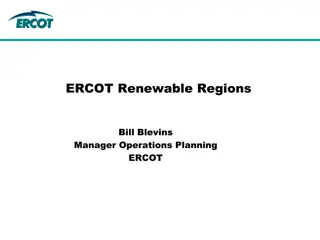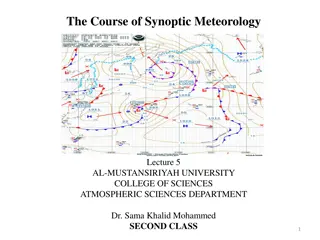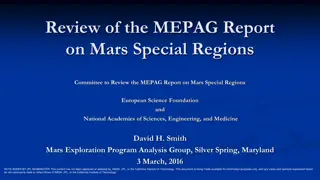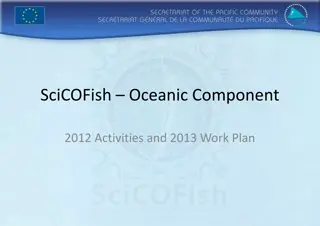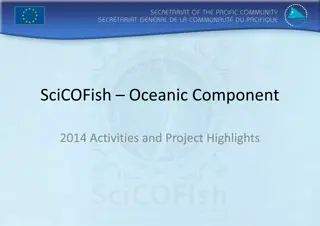An overview of solar influence on climate
The relationship between solar variability and Earth's climate is complex, with factors like the Sun's energy output, 11-year solar cycle, and regional differences playing a role. This overview delves into how solar influences interact with atmospheric and oceanic processes, such as the Sun's impact
6 views • 37 slides
Tokyo Global Scholarship Programs at Tokyo Metropolitan University
Explore the Tokyo Global Partnership Scholarship Program offering opportunities to earn a graduate degree from Tokyo Metropolitan University with benefits like international airfare, tuition coverage, and a monthly stipend. Hear from a 2021 recipient, Manolo Benitez, who shares his enriching experie
1 views • 4 slides
Yacht Rental Bahamas Nassau : Experience the Best of the Bahamas
Yacht Charter Bahamas Nassau offers exclusive cruising experiences within the turquoise waters of the Coast of the Bahamas! During your journey through this oceanic city keep in mind its historical background coupled with cultural traditions that hav
0 views • 6 slides
Climate and Climatic Regions of Pakistan
Pakistan exhibits diverse climatic regions ranging from sub-tropical continental mountains to arid desert plateaus. Factors like altitude, latitude, and distance from the sea greatly influence the country's climate. The country experiences weather conditions such as temperature variations, rainfall
0 views • 14 slides
Understanding Regions in Geography
Regions in geography are defined by common features such as climate, landscape, language, or religion. They serve as basic units of geography, with the Middle East being a notable example encompassing political, environmental, and religious characteristics. Regions can be classified based on physica
0 views • 10 slides
Understanding Regional Planning and Economic Regions in Geography
Regional planning involves defining regional units, planning regions, and economic regions to ensure sustainable development. It focuses on creating suitable areas for population and employment distribution. The characteristics of planning regions include resource homogeneity, internal coherence, an
0 views • 16 slides
The Blue Economy and Marine Pollution: A Comprehensive Overview
The presentation outlines the thriving ocean economy, the concept of the Blue Economy, the World Bank's approach, risks faced by oceans, and the impact of marine pollution on Small Island Developing States and coastal regions. It emphasizes sustainable development of oceanic activities, collaboratio
1 views • 12 slides
Population Resource Regions and Zelinsky's Classification
Geographers have long studied the relationship between population growth and resource adequacy, leading to the concept of Population Resource Regions (PRR) by W. Zelinsky. Zelinsky identified five types of PRR based on population-resource ratios, ranging from Type A with high resource utilization po
0 views • 8 slides
Population Distribution in Different Regions of Pakistan
The population distribution in Pakistan varies significantly among different regions, with certain provinces like Punjab and Sindh having higher population densities compared to Baluchistan and FATA. The rural areas are also categorized into different population density regions based on the number o
0 views • 14 slides
A Comparative Overview of World Cultural Regions
Explore the various types of cultural regions and their characteristics around the world, including North America, Latin America, the Middle East, Sub-Saharan Africa, and Europe. Discover how these regions differ in terms of language, religious beliefs, customs, and art forms, providing insight into
1 views • 22 slides
Geography and Five Regions of Wisconsin: Key Points and Natural Features
Wisconsin's geography is influenced by the Great Lakes and the Mississippi River, affecting population distribution based on topography, soil, and climate. The state's historical reliance on soil resources for fur trade, lumber, farming, and manufacturing is evident. Varied regions like the Driftles
3 views • 9 slides
EU Coal Regions Exchange: Pitch Presentation Guidelines for Matchmaking Session
In the upcoming matchmaking session on December 10th, 2021, representatives from EU coal regions will have the opportunity to pitch their ideas for potential exchanges and engage in discussions. Participants are required to prepare a formal pitch slide by December 6th, stick to a strict 90-second ti
0 views • 4 slides
Understanding Ocean Basins and Their Characteristics
Ocean basins are vast submarine regions that cover a significant portion of the Earth's surface, hosting the majority of the planet's water. These basins exhibit various features such as ocean ridges, deep-sea trenches, and seismic ridges. The ocean floor is constantly evolving due to plate tectonic
0 views • 18 slides
Antler Orogeny and Foreland Basin Model Overview
The Antler Orogeny, a Late Devonian to mid-Early Mississippian event, impacted the passive margin of the North American continent, particularly in Nevada and Idaho. The orogeny involved displacement of oceanic strata, subsidence of a foreland basin, and maintenance of highlands in the interior regio
1 views • 14 slides
Gravity Waves as a Mechanism of Coupling Oceanic and Atmospheric Acoustic Waveguides to Seismic Sources
Direct excitation of acoustic normal modes in horizontally stratified oceanic waveguides is negligible for shallow earthquakes due to velocity disparities. This study evaluates the contribution of scattering by hydrodynamic waves in generating abyssal T-waves. The research explores the role of scatt
1 views • 6 slides
Comparison of Convective Cores in Gulf and Plains Regions
A detailed comparison of convective cores between Gulf and Plains regions across different seasons reveals interesting patterns. Gulf storms have more cores in the fall, with larger sizes and more cores in winter. The Plains see more cores in the spring season and have generally bigger storms year-r
1 views • 4 slides
Euroscepticism in Border Regions: The Identity Crisis of Europe
Euroscepticism in border regions reflects frustration, disillusionment, and disengagement with the European idea at the borders of the EU. The identity crisis of Europe is showcased through sentiments of dissatisfaction and detachment towards the EU, as evidenced in various border regions. This phen
0 views • 29 slides
Analysis of Longest Instrumental Rainfall Series in Indian Regions
This study by Yamini Kulkarni analyzes the longest instrumental rainfall series in Indian regions from 1848 to 2006. It includes the development of rainfall series for different zones using a network of rain gauge stations and statistical methods to understand fluctuations in precipitation over a 15
0 views • 9 slides
Analysis of CHyM Model Performance in Different Regions
The study evaluates the performance of the CHyM model in humid and arid regions, specifically focusing on Tropical South America and Central America. Through analyzing simulated values, seasonal behavior, and response to ENSO phases, the study provides insights into water resource management in thes
0 views • 16 slides
Enhancing Region Search Queries with Content and Spatial Similarity Measures
This project focuses on developing a system to provide top-k similar regions on a map based on user-specified query regions. By incorporating content and spatial similarity measures, the algorithm aims to accurately retrieve regions with similar shapes, scales, and representative categories. Challen
0 views • 12 slides
Understanding Plate Tectonics and Earth's Crust
Explore the differences between oceanic and continental crust, the distinctions of lithosphere and asthenosphere, the dynamics of convergent and divergent boundaries, as well as the concepts of folding and faulting in geological formations. Delve into the characteristics of oceanic crust versus ocea
0 views • 10 slides
The Impact of Artists and Creatives in Border Regions on Culture and Economy
Artists and creatives play a crucial role in the cultural and economic landscape, particularly in border regions where diverse cultures intersect, fostering creativity and innovation. Despite facing challenges, they significantly contribute to social cohesion, the European economy, and the cultural
1 views • 21 slides
Forces Shaping Landforms: Inside and Outside the Earth
Explore how landforms change due to forces inside the Earth, like plate boundary activity forming fold mountains, and forces outside the Earth, such as the creation of oceanic trenches. Discover the formation of fold mountains like the Alps and Rockies, as well as deep oceanic trenches like the Mari
0 views • 10 slides
Visualization of Crude Birth Rates in European Regions
Explore the visualization of crude birth rates in different European regions using cartography and distribution plots. The data, sourced from Eurostat Regional Statistics, illustrates variations across regions, with France showing both the lowest and highest rates relative to other European countrie
0 views • 4 slides
Understanding Ionospheric Absorption Laws and Regions
The principles of the ionosphere at middle and low latitudes, Lambert-Beer exponential absorption law, and characteristics of E and F regions are discussed. The absorption of solar radiation, recombination reactions in different regions, and ionization processes are highlighted, providing insights i
0 views • 15 slides
Insights into Oceanic Fisheries Website Development
Explore the evolution of the Oceanic Fisheries Website, supported by multiple entities and gradually developed over the past two years. Delve into detailed reports, data accessibility, and plans for future enhancements in the realm of fisheries management.
0 views • 8 slides
Collaborative College Regions Mapping Tool for Educational Improvement
Explore the collaborative efforts between various colleges and regions in Scotland through this comprehensive mapping tool. Gain insights into partnerships, initiatives, and regions working together for educational improvement. Visualize the connections and collaborations enhancing the educational l
0 views • 7 slides
Biologically Important Evening Element in Promoter Regions: Insights from Research by Leila Shokat
The research explores the significance of the Evening Element as a motif in gene promoter regions regulated by CCA1. Understanding the importance of motif positions in promoters reveals insights into gene regulation and biological relevance. The study highlights the relevance of consistent motif pos
0 views • 6 slides
Euroscepticism in Border Regions: A Deep Dive into Cross-Border Practices and Perceptions
Explore the phenomenon of Euroscepticism in border regions, delving into cross-border practices and perceptions at the EU's internal borders. This study sheds light on how border regions emerge both functionally and institutionally, emphasizing the importance of understanding Euroscepticism in these
0 views • 16 slides
The Behavior of Spotless Active Regions During Solar Minimum
In this work presented at the SPAnet Workshop on Radio Astronomy in 2017, the study analyzed the physical parameters of spotless active regions observed during the solar minimum period from 2007 to 2010. Radio maps at 17 GHz from the Nobeyama Radioheliograph and magnetograms from the Michelson Doppl
0 views • 14 slides
Understanding the Low Velocity Layer (LVZ) in Subduction Zones
The presence of a Low Velocity Layer (LVZ) at the top of subducting plates in subduction zones has significant implications for imaging and potentially seismogenesis. This hydrated layer of oceanic crust, likely caused by dehydration reactions during subduction, affects seismic wave behaviors and ca
0 views • 12 slides
Optical Signatures of Climate Change Impacts on Phytoplankton
Explore the optical signatures of climate change impacts on phytoplankton through images showing differences in primary production, reflectance ratios, community changes, and trends in various oceanic regions. The data visualizations provide insights into the effects of climate change on phytoplankt
0 views • 10 slides
Overview of ERCOT Renewable Regions and Zone Map
ERCOT, managed by Bill Blevins, divides into seven solar and wind regions including North, South, East, West, Panhandle, Coast, and Houston. This division aids operations planning and management. The Renewable Regions Map and Zone Map play key roles in GIS status reporting and meeting presentations,
0 views • 4 slides
Understanding Air Masses in Synoptic Meteorology
Air masses are large bodies of air with uniform temperature and moisture conditions, influencing weather patterns across vast regions. Source regions play a key role in determining the characteristics of air masses, with factors such as stability of atmospheric circulation and surface properties sha
1 views • 17 slides
Review of MEPAG Report on Mars Special Regions Committee
The MEPAG Report on Mars Special Regions Committee was established by joint requests from ESA, ESF, and NASA to review planetary protection requirements for Mars. The Academies and ESF play a crucial role in providing independent scientific advice. The Joint Committee comprises experts from various
0 views • 14 slides
Progress Report on SciCOFish Oceanic Component Activities 2012-2013
Logframe structure and progress indicators are presented for the SciCOFish Oceanic Component focusing on efforts to manage bigeye and yellowfin tuna fisheries sustainability. The report outlines key objectives, progress on indicators, observer training achievements, and data coverage rates. Efforts
0 views • 24 slides
SciCOFish Oceanic Component 2014 Activities and Project Highlights
The SciCOFish Oceanic Component in 2014 focused on conservation and sustainable use of coastal and oceanic fisheries resources in the PI region. The project aimed to provide scientific data and advice for effective management decision-making. Progress was made on various indicators including efforts
0 views • 19 slides
Colonial Life in the Mid-Atlantic and Southern Regions
Explore the intricate details of colonial life in the Mid-Atlantic and Southern regions during the early periods of American history. Discover the geographical landscapes, religious practices, social structures, political systems, economic activities, and community arrangements that shaped the daily
0 views • 19 slides
Understanding TEN Testing in Cochlear Implant Candidacy
Discover the significance of Threshold Equalizing Noise (TEN) testing in evaluating cochlear implant candidacy for patients with potential dead regions in the auditory system. Learn about dead regions, absolute threshold levels, diagnosis using TEN test, interpretation of results, and step-by-step g
0 views • 17 slides
Anatomical Terminology Practice Exam: Body Regions and Landmarks
Test your knowledge of anatomical terminology by identifying various body regions and landmarks in this interactive practice exam. Practice naming cranial, cervical, thoracic, pubic, pectoral, axillary, brachial, and antecubital regions with the help of visual aids. Improve your understanding of ana
0 views • 32 slides




